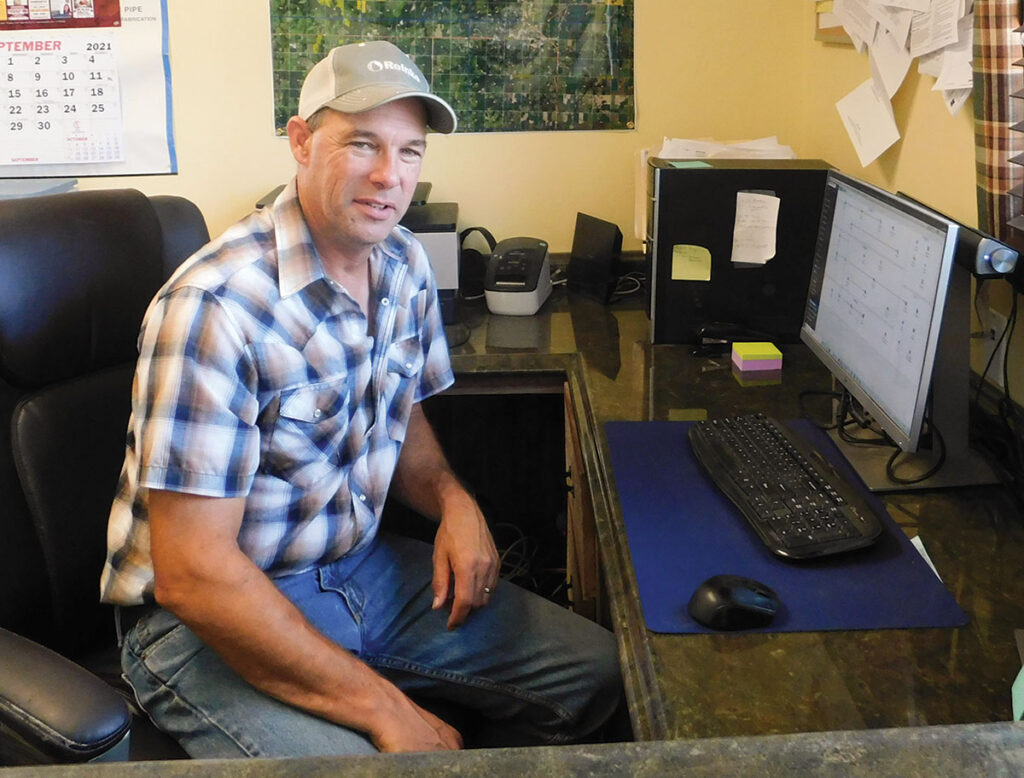
Wayne Jeans said being a farmer is all he ever wanted to do
RICHARDS, MO. – “All I ever wanted to do when I was growing up in the 1980s was to farm. My parents said ‘get an education and get a job.’ I did, but I still wanted to farm. It took a bit of convincing them, but they finally agreed and it worked out,” Richards, Mo., farmer Wayne Jeans said.
Wayne grew up on the farm his grandpa and dad purchased when they came to Vernon County in 1955. He left the farm and went to college, but came back in 1993. He and Pauline (Waltrip) were a young married couple with a 1-year-old son and wanted to raise their children on the farm. They built two hog barns and Pauline mostly took care of them. They had the barns for 25 years, along with two more children. Chase is now 28, Zach is 25, and their daughter, Chelsey is 22.
Wayne started farming the land. Their first tractor was a John Deere 7610.
“All my dad had was a six-row planter. Pauline and I purchased a 12-row Kinsey planter. My dad had a fit. He was used to filling up the planter boxes more often. He never really became accustomed to believing the planter would go more than one round and insisted we fill it.”
Wayne’s dad, J. T. Jeans, and a neighbor, Clarence Schoneweather, Jr., decided to retire the same year. Wayne and Pauline took on their land and farmed about 1,200 acres. As the years passed, Wayne’s parents moved to an assisted living home in Fort Scott, Kan., and they were unable to help with the farming. However, the children grew and helped as they were able. They finished high school and went away to college. Their son Zach chose to join the Marines. He completed his time in the military and did well, but wanted to come back to help on the farm. Chase chose to help on the farm. He and Zach are partners with their parents, being the fourth-generation of the Jeans family to live on the same land.
The family is consistent with conservation practices. They use minimal and no-till planting, soil tests, plant some cover crops, make terraces and waterways – anything that needs done, they try to be prompt to fix it. For fertilizer, they use liquid, utilize litter, as well as commercial dry fertilizer.
They do a great deal of irrigating. Since much of the land they farm is quite a way from their home farm, they plan to limit trips to different fields and make the least trips possible. They plant a certain amount of soybeans and corn, and rotate each year. Different maturing seeds are used so they will have time to harvest according to the moisture level in the crops.
They also have built a storage and handling facility, which helps them store grain more efficiently, and harvest crops in a timely manner, when the weather cooperates.
“Today, we farm more acres than I ever thought we would,” Wayne said. “It takes good equipment to make things work. We shelled 200 acres of pretty decent corn in one day recently.”
The Jeans family built a stand-alone shop at the farm where Wayne spends a lot of time on the computer checking grain prices and keeping up with markets and Pauline keeps up with the bookwork. Some of the wood on the walls of the shop came from the barn his grandfather had on the barn at the first farm. It has the letter “J” branded onto it making an attractive, but memorable wall.
Pauline is also a pretty good combine operator when the need arises.
“I can’t imagine doing anything else, but I want to say this – Pauline and I are in this together,” Wayne said. “Her work is as important as mine and she is always ready to lend a helping hand. We agree on things and do them together.”







